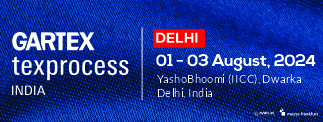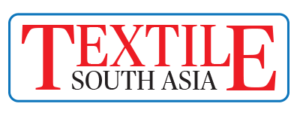Fashion for Good’s Sorting for Circularity framework expands to address the challenge of ensuring rewearable textiles remain in use as opposed to finding their way into global waste streams or landfills. This 18-month project tests automated sorting technologies using artificial intelligence and machine learning to optimize the sorting of rewearable garments and enable greater circularity.
A Growing textile waste landscape
Global textile production and consumption have doubled over the past 15 years, while the number of times a garment is worn has dropped by 40%*, averaging only seven uses before it is tossed away. In the EU, the amount of used textiles exported has tripled over the last two decades from slightly over 550,000 tonnes in 2000 to almost 1.7 million tonnes in 2019, and their fate is highly uncertain*. Many of these garments receive the designation of “fit for reuse” and are later sold to second-hand stores across Europe or export markets like Africa or Asia. However, due to the sheer volume of these exported textiles and the lack of understanding of demand and criteria for resale across the industry, many ultimately end up in waste streams, landfills or incinerated.
As legislative changes loom in the EU, including Extended Producer Responsibility (EPR)* schemes mandating accountability on garments placed on the market, and the Waste Shipment Regulation* imposing stricter restrictions on textile exports outside EU borders, the volume of collected and exported textiles will continue to increase, underscoring the urgency for comprehensive solutions.
Katrin Ley, Managing Director, Fashion for Good says “As our Sorting for Circularity framework expands, we’ll be able to address the root cause of shifting the waste burden elsewhere. Addressing this requires an agreed-upon framework for quality and resale potential in key export regions as well as developments in using AI sorting. This pioneering consortium will provide crucial insights for policy developments and investments towards a circular economy.”
Harnessing the power of data & artificial intelligence
To address these challenges, Fashion for Good is expanding its Sorting for Circularity framework to address the challenge of sorting for rewearable textiles to understand better their resale potential and the demand across the second-hand market. While current Near Infrared (NIR) technology can determine garment composition, the task of assessing re-wearability is largely manual.
This project will test automated sorting technologies using machine learning and artificial intelligence (AI) to collect product information — such as colour, style, garment type, and quality. This will enable sorters and brands to make better decisions and sort efficiently based on product data and criteria from local, European, and export resale market requirements, thus optimising the flow of textiles to achieve their highest value potential.
The findings will be shared in a report with a supporting business case and implementation roadmap to inform investment decisions in infrastructure, Circular Business Models (CBM) and repair centres.
The Rewear Project builds on Fashion for Good’s Sorting for Circularity framework initiated in 2021 and subsequently launched in Europe, India and the United States harmonising the collection, sorting and recycling industries in order to advance textile-to-textile recycling technologies and the resale industry.
Marieke Koemans-Kokkelink, Head of Sustainability, ERDOTEX says “With this project, we hope to clarify the myths and half-truths on post-consumer waste dumping, but also salvage those by understanding the processes and journeys these garments travel. Then we can reach true circularity.”
The Sorting for Circularity Europe: Rewear Project is driven by Fashion for Good with catalytic funding provided by brand partners adidas, BESTSELLER, Bonprix, C&A, Inditex, Levi Strauss & Co., Otto Group, PVH Corp., and Zalando. Circle Economy Foundation leads the creation and implementation of the methodology, with support from Consumption Research Norway, Oslo Metropolitan University and Revaluate.
To ensure accuracy and representation in capturing data on the flow of textiles within the EU and export markets, this project will focus on specific geographical regions: Lithuania (Nordic/Baltic), the Netherlands (Western), Poland (Central-Eastern), and Spain (Southern Europe).
The project also brings together the largest industrial textile sorters in Europe; including Erdotex, ModaRe, Humana People to People Baltic and Wtorpol, showing how different stakeholders — brands, sorters, and innovators — can work together to comply with evolving regulations.










